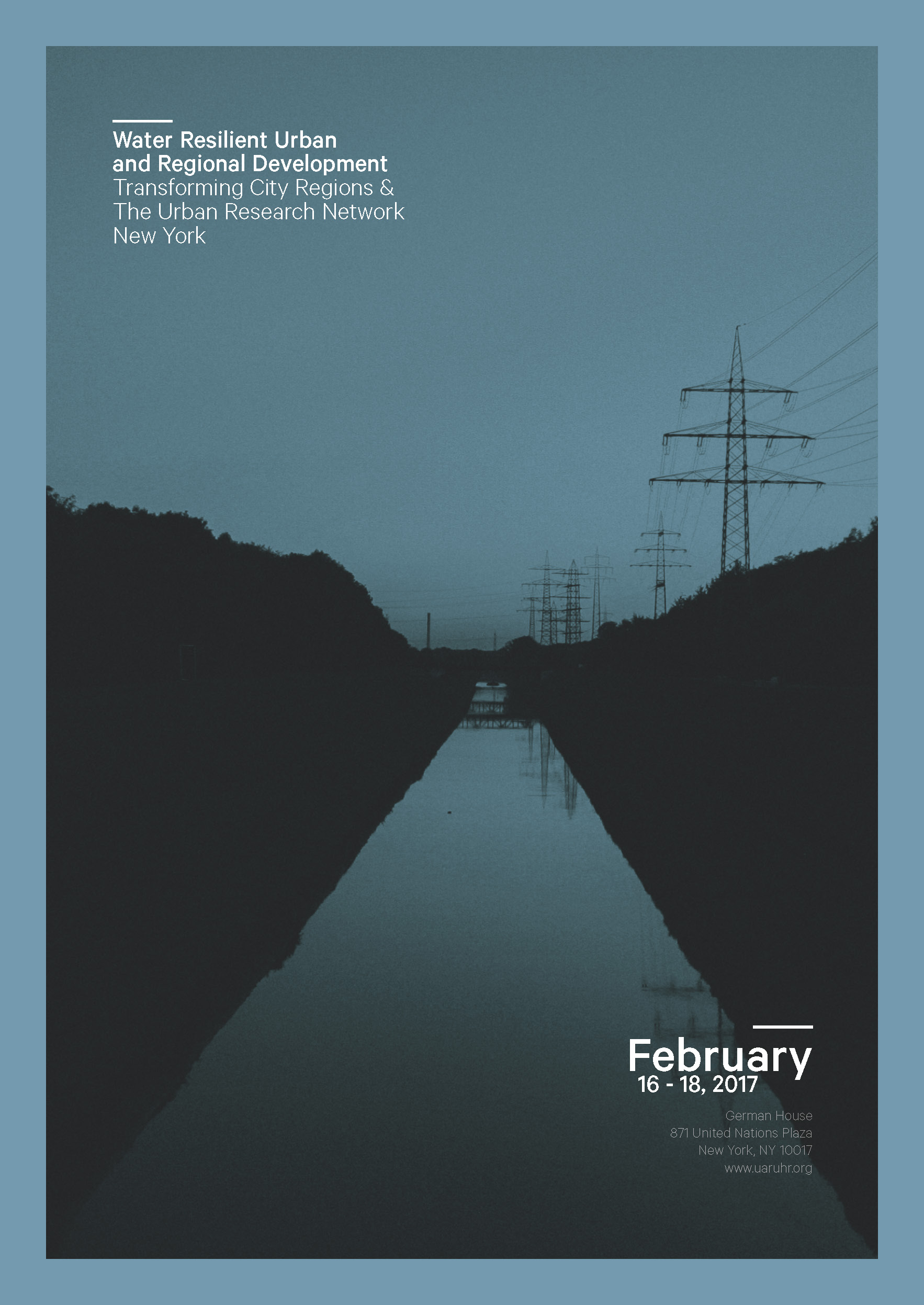Water Resilient Urban and Regional Development
Transforming City Regions &
The Urban Research Network
New York
International symposium
NEW YORK, February 16-18, 2017
Organization: TU Dortmund, University of Virginia, UAR New York, The Emschergenossenschaft
Seventy-one percent of the earth’s surface is covered by water. As a result of climate change and urban population growth, managing water resources has become more important than ever. The 2015 UN-Habitat’s “Guiding Principles for City Climate Action Planning” established globally applicable principles to help cities develop comprehensive climate action plans.
Cities and urban regions play a central role in reducing human vulnerability by designing resilient infrastructures and enhancing a sustainable urban metabolism. Imbalanced ecosystems, scarce water resources and rising sea levels are just a few of the challenges that cities and urban regions face when designing climate action planning tools. While the UN principles serve as guidelines, different cities confront different risks and need to define which tools to use in their specific context. As a result, mitigating the impacts of a changing climate through resilient spatial
development has become an important topic in urban design, environmental planning, and architecture. The increasing need for green infrastructure and efficient water management in the design of safe, attractive and sustainable urban spaces requires innovative design solutions and new analytical methods.
This symposium will focus on the role of water at the interface of urban and rural
territories. Urban planners, researchers and practitioners will present examples of design and urban planning solutions that have been implemented both in the US and in the Ruhr area in Germany in order to compare best practices, discuss different methodological approaches and define topics of future research and education. Ultimately, the goal of this symposium is the water management.
Urban planners, researchers and practitioners presented examples of design and urban planning solutions that have been implemented both in the US and in the Ruhr area in Germany in order to compare best practices, discuss different methodological approaches and define topics of future research and education. Examples from cities and regions of New York City, Torotno, Virginia and Vancouver on the North-American side, and Dortmund and Duisburg from the German Ruhr Region, Germany. Universities of the City College of New York, Rutgers University, Simon Frasier University, and the Technical University of Dortmund together with the University of Virginia as main organizers together with the UAR New York, participated in a discourse with practicians such as the Emschergenossenschaft and US consultants in resilient urban and regional development.
The organizing team led by Christa Reicher, Mona El Khafif and Jan Polívka also invited further researchers from Dortmund Planning faculty’s department of Planning Cultures and IRPUD and their North-American partners working on resilience issues to participate in the symposium. In a Pecha-Kucha Session, nearly twenty participants presented ist research and practical work, further discussed in a broader plenum. The program included readings by Ila Berman from the Virgionia School of Architecture, Pippa Brashearfrom SCAPE, Catherine Seavitt Nordensen from The City College of New York, Uli Paetzel from the Emschergenossenschaft, and Kai-Uwe Bergmann from BIG – Bjarke Ingels Group, mainly on the New York Water Resilience Planning.
In a special session, Anthony Acciavatti and Inaki Alday from the University of Virginia introduced their research on Rivers Ganges and Yamuna in India. The final workshop of the key stakeholders could agree on a concrete road map towards an integration of resilience into the regional urban planning and design, and pointed out concrete steps towards an international cooperation in both areas of research and education.
